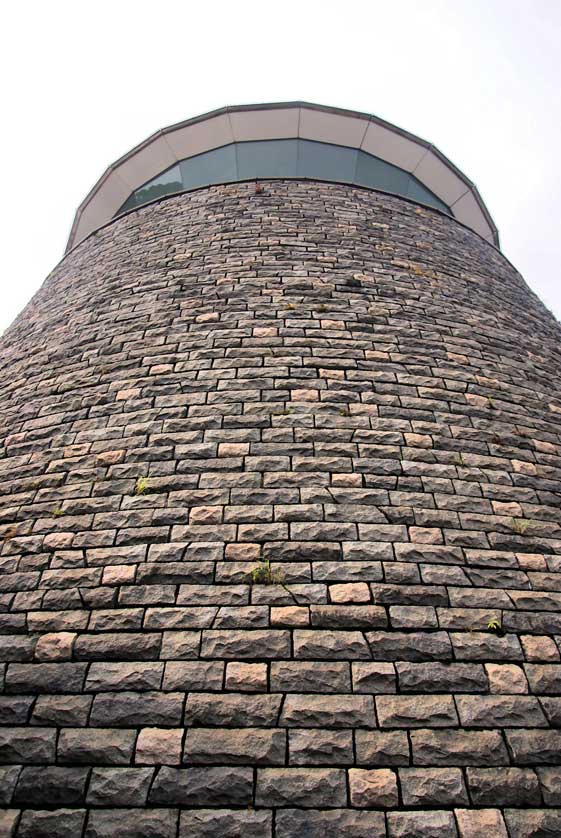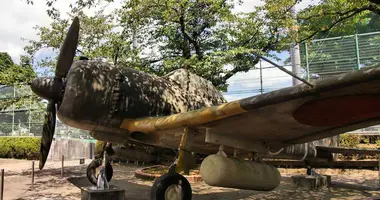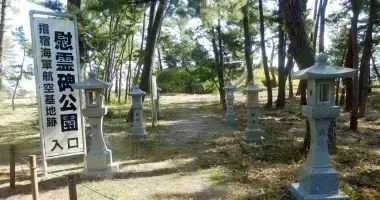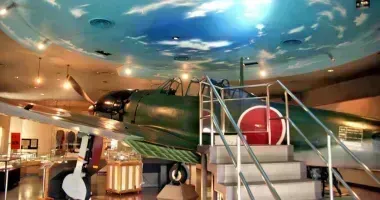Kagoshima Museum of Modern Literature
Kagoshima Museum of Modern Literature & Merchen Museum かごしま近代文学館 & かごしまメルヘン館
The Kagoshima Museum of Modern Literature & Merchen Museum is a museum dedicated to Japanese authors of the modern period (1868-) who have a connection with Kagoshima. Manuscripts and personal effects of 28 authors are on display, the most famous of which are: Kaionji Chogoro, (1901-1977) born in Kagoshima, achieved success with his writing at an early age. In the postwar period he wrote epic historical novels, many of which became TV shows and movies.
The 1990 movie Ten to Chi to (Heaven & Earth), based on his novel of the same name, was the most popular domestic movie in Japan in 1990. He also wrote many historical biographies, but what he considered his greatest work, a biography of Saigo Takamori, remained incomplete at his death.
Fumiko Hayashi, (1903-1951) spent part of her childhood in Kagoshima, and is known as an early feminist poet and author. Some of her works are available in English translation.
Her most famous works are the 1930 Horoki (Diary of a Vagabond), an autobiography later filmed by Mikio Naruse, and the 1951 Ukigumo (Floating Clouds), also filmed by Naruse. She reportedly positively on the Second World War in Asia as an "embedded" writer, but like most such writers received little criticism in the post-war period.

Kagoshima Museum of Modern Literature, Kyushu

Märchen Museum at the Kagoshima Museum of Modern Literature, Kagoshima, Kyushu
Hatoju Muku, (1905-1987) lived in Kagoshima, and was a prolific writer of children's stories, often with an anti-war message, though he wrote nothing critical of the war during it. He was influenced by Jack London whom he had met in Japan.
Haruo Umezaki, (1915-1965) was based in Kagoshima towards the end of the war. He was in the signal corps at a naval base for suicide squads. His most famous story, Sakurajima, published in 1946 and available in English translation in the collection Catch & Other War Stories, is based on his experiences there.
Toshio Shimao, (1917-1986) was an officer in a kamikaze squadron based on the Amami Islands between Kagoshima and Okinawa, but the war ended before he went on a mission. His works focus on his wartime experiences and also his wife's mental illness, the subject of what is probably his most well known work, The Sting of Death, which was made into a movie. Some of his works are available in translation.
Unfortunately there is little English information on display at the museum.
Maerchen Museum
Housed in the striking circular stone tower attached to the museum is the Maerchen Museum, "maerchen" (märchen) being the German word for "fairy tales" the subject of the museum.
Leaning mostly to children, there are numerous fairy tale books in personal reading areas as well as playrooms, interactive exhibits, and an "Alice Through the Looking Glass" room themed around Lewis Carroll. The Brother Grimm feature strongly.
Access - Getting to Kagoshima Museum of Modern Literature
Entrance to each museum is 300 yen for adults, 150 yen for kids.
Kagoshima Museum of Modern Literature (k-kb.or.jp/kinmeru)
5-1 Shiroyamacho
Kagoshima, 892-0853
Tel: 099 226 7771
Open from 9.30 am to 6 pm. Closed Thursdays & over the New Year.
Accessible by tram from Kagoshima Chuo Station to either Shiyaku-sho-mae or Asahi-dori tram stop.
If you are riding the Kagoshima City View Bus get off at Tenmonkan or nearer still, the Saigo Takamori Statue.
Hotels In Kagoshima
The area around Kagoshima Chuo Station has many hotels including the Hotel Gastof, the Hotel Urbic Kagoshima, the Toyoko Inn Kagoshima Chuo-eki Nishi-guchi, the JR Kyushu Hotel Kagoshima Hotel and the APA Hotel Kagoshima Chuo-Ekimae.
Book Hotel Accommodation in Kagoshima Japan
Guide Books on Japan
Kagoshima Museum of Modern Literature: read a guide to the Kagoshima Museum of Modern Literature and the Merchen Museum for children's fairy stories.













